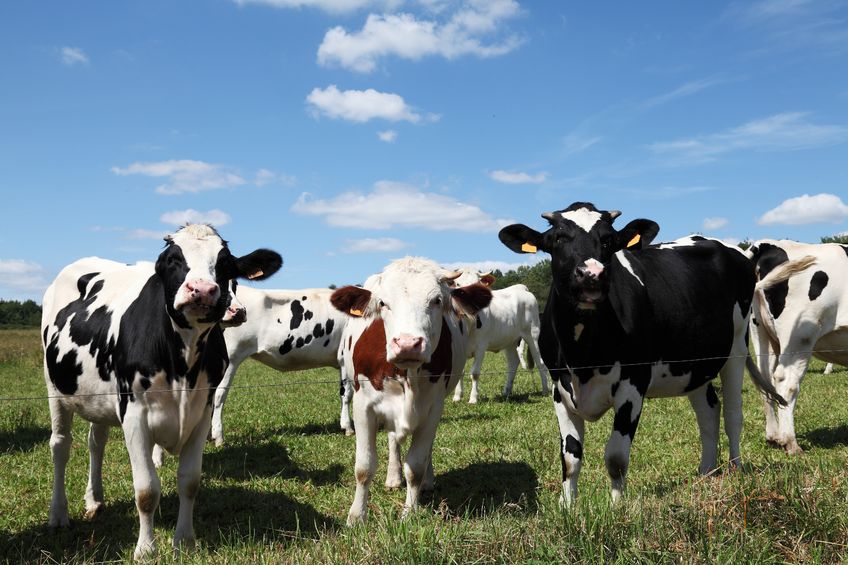
Vets are urging Welsh dairy and livestock farmers to screen their herds and flocks for Johne’s as a first step to averting infection in disease-free animals.
Johne’s is a slow-developing, incurable disease spread through faeces, milk, colostrum and through the womb.
The disease is thought to be present in around 90% of Welsh dairy herds with 5% of animals within those herds typically affected.
In its clinical form, it causes thickening of the intestine, preventing cattle and sheep from absorbing nutrients and resulting in chronic diarrhoea, progressive weight loss and eventual death.
At a sub-clinical level, it affects the immune system leading to poor fertility and lower production.
In a bid to control and ultimately eradicate Johne’s, veterinary practices across Wales are delivering fully funded short training courses through the Lantra’s Skills Development programme with training jointly developed by Welsh government programme Farming Connect and the National Animal Disease Information Service (NADIS).
The first of these meetings was held in Pembrokeshire where vets Mike John and Alex Cooper from the Fenton Veterinary Practice, Haverfordwest, delivered a workshop.
They advised farmers to first establish the Johne’s status of their herds, with a 30-cow screen recommended as the best approach.
“That’s the best place to start because until you know the infection status you won’t know how to deal with it,” said Mr Cooper.
'Difficult diagnosis'
Diagnosis can be difficult because the level of antibodies fluctuates - it can take three or four tests to definitively confirm that an animal has Johne’s.
It is difficult to test for in younger cattle because antibodies are often not present – the bacterium that causes Johne’s has an incubation period of three to five years which means a cow might be infected, but not be infectious or affected.
Mr Cooper recommends testing cattle aged between 3-7 years. “Choose your older cows, those that repeatedly have high somatic cell counts, the poor performers, those with chronic lameness.”
Without testing farmers are often unaware they have Johne’s as infected animals can be culled out of the herd due to issues such as high somatic cell counts or poor fertility.
But equally they can be difficult to spot. “Some of our clients are surprised when they get their test results back because, to look at, an infected animal can sometimes be the best cow in the herd,” said Mr John.
'Infection risk'
He recommends continued surveillance through regular testing. Culling is advised for animals that test positive and are at the clinical stage of infection as they will be infecting other animals by shedding antibodies.
The biggest infection risk comes from calves up to the age of six months.
Once Johne’s status is established a control plan should be put in place, ideally in conjunction with the farm vet.
This should be individually tailored to the farm system. “Control measures in broad terms might not be the most effective way for your system,” Mr Cooper told farmers.
As control can be difficult, he advised farmers to initially opt for the small wins, such as rapid culling of diseased animals, preventing faecal contamination of food and water and maintaining good hygiene in calving pens.
“Collecting colostrum and milk in the parlour is the best way of minimising the risk of contamination from muck,” he said.
'Keen pens clean'
Mr Cooper recommends not overstocking housing as animals will be dirtier, and to separate calves from muck. “Keep pens clean, make sure you have enough straw.”
He says to clearly identify Johne’s positive animals, for example with coloured ear tags. Keep separate dry cow and calving areas for infected dams and separate newborn calves from these dams at birth, rearing with artificial colostrum and milk.
Calves from infected dams should not be retained as replacements and re-stock only from CHeCS-accredited herds, especially bulls.
Muck can be infectious for up to 12 months so avoid spreading slurry onto fields that animals graze, especially youngstock.
In addition to the delivery of Johne’s workshops in other parts of Wales, the Welsh government-funded training programme will include modules on countering antibiotic and anthelmintic resistance, animal health planning, bovine TB eradication, lameness reduction, reducing mastitis and lambing losses.
